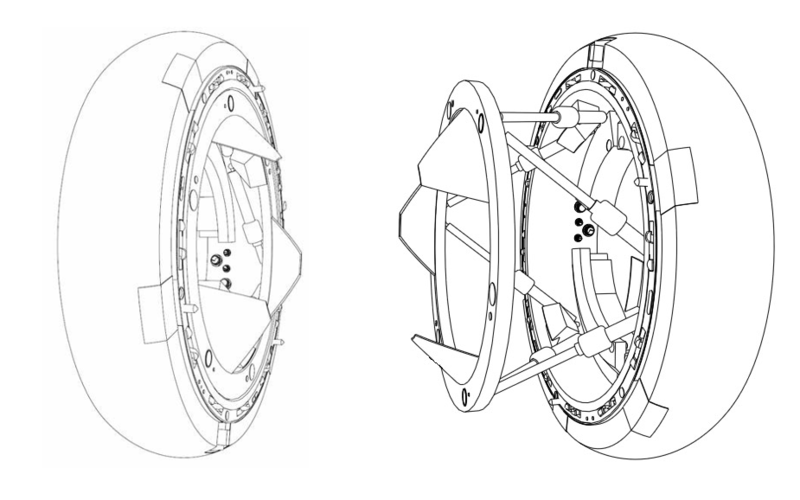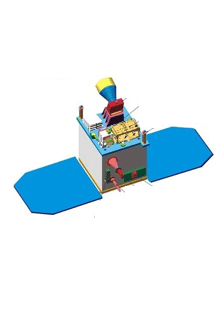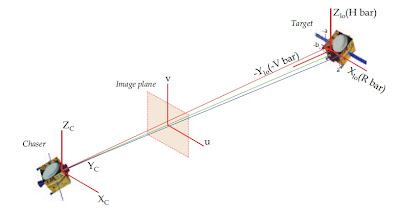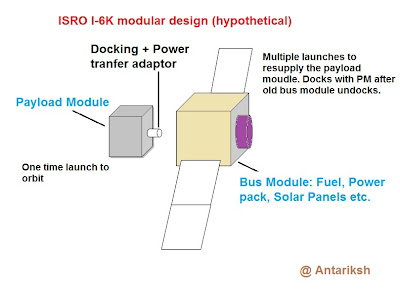O
Ok..
But I strongly believe time for ISRO 2.0 version is been long pending now..... They can choose any or all Indian Tech Giants like L&T, Godrej, Mahindra and TATA who have been manufacturing Rocket ancillaries for ISRO from past two decades now..
let them hand over TOT to these giants for further development of heavy I will vouch for Godrej coz they already have expertise and company name as Godrej Areospace.. Let the whole project of launching come under the umbrella of ANTRIX..
ISRO can put it's focus mainly on ISS / RLV / Manned mission to reduce it's time period. we can't now lag in the race of space exploration
The next couple of decades are going to be more about space exploration and it's tech..
If you guys remember I posted and article in this forum about Visual docking technologies ( QUOTE="lupgain, post: 1200709, member: 1175"]In the 12th five year plan of ISRO, a new initiative of Space Docking Experiment has been mentioned. The experiment will be based on the low impact docking concept (berthing scheme, Fig.1) using two small satellites (IMS-1 class ~ 100 kg, Fig.2). During the plan period a number of small satellite (IMS class) missions have been planned to demonstrate the new emerging technologies. Rendezvous and Docking (RVD) is one of the major missions of technology demonstration . These satellites will be flown on the PSLV missions as auxiliary or co-passenger satellites.
FIGURE 1
FIGURE 2
Possible Applications:
Mastering the RVD technology will help ISRO in future space missions. One possible use could be in orbit servicing of satellites. ISRO operates large number of satellites that are used for communication, remote sensing and soon for navigation purpose. Life of these satellites is limited by the amount of fuel they carry with them in orbit. RVD will allow ISRO to dock a servicing spacecraft with a satellite for the purpose of servicing and refueling. This will increase lifespan of the satellite and save the cost of building replacement satellites. Another advantage of satellite servicing is reduction in space debris as fewer replacements will be required for a satellite. RVD is also critical for Human Space Flight program of ISRO.
Rendezvous and docking (RVD) experiment mission involving two IMS (Indian Micro Satellite) series spacecrafts. ISAC, a ISRO centre, has been involved in developing navigation and guidance algorithm for RVD. In this experiment, two IMS Spacecrafts, one designated as target and the other designated as chaser, will be launched by a PSLV launcher into two slightly different orbits. There will be no communication link between the target and chaser during the far range rendezvous phase in which relative separation between the spacecrafts will be around 50km to 5km range and this phase will be a ground guided phase. In the docking phase of the mission, docking sensors such as Laser Range Finder during the relative separation of 5 km to 0.25km, Docking Camera during the relative separation of 300m to 1m ,Visual Camera for real time imaging during the relative separation of 1m to docking will be used respectively.
For the purpose of testing and verification of vision based docking algorithms before a real world implementation is carried out, ISRO has developed a 3D simulation environment that is being used to simulate docking phase of the mission. A snap of the simulation is presented in the Figure below.
Targeted Applications of RVD: RVD technology is one of many enabling technologies for ISRO's human space flight program. Another promising application of this technology will be increasing age of ISRO's satellites like that from IRS, INSAT and IRNSS systems. RVD technology will allow a resupply (fuel, power pack etc) spacecraft to dock with a satellite in orbit and allow for replenishment of fuel and power pack, thereby increasing satellites age. To facilitate this, as per my research, ISRO has been designing its newest satellite bus called I-6K, which is a unified bus with modular design ,multi EV panels and scalable structure (Bus module & payload module). A modular design will allow easy and fast replacement of bus module in the orbit by the resupply space craft. The resupply spacecraft might itself be a new bus module (with fuel, power pack etc.) that will dock with the payload module in the orbit after the old bus module undocks.
UNDERSTANDING VISUAL NAVIGATION












